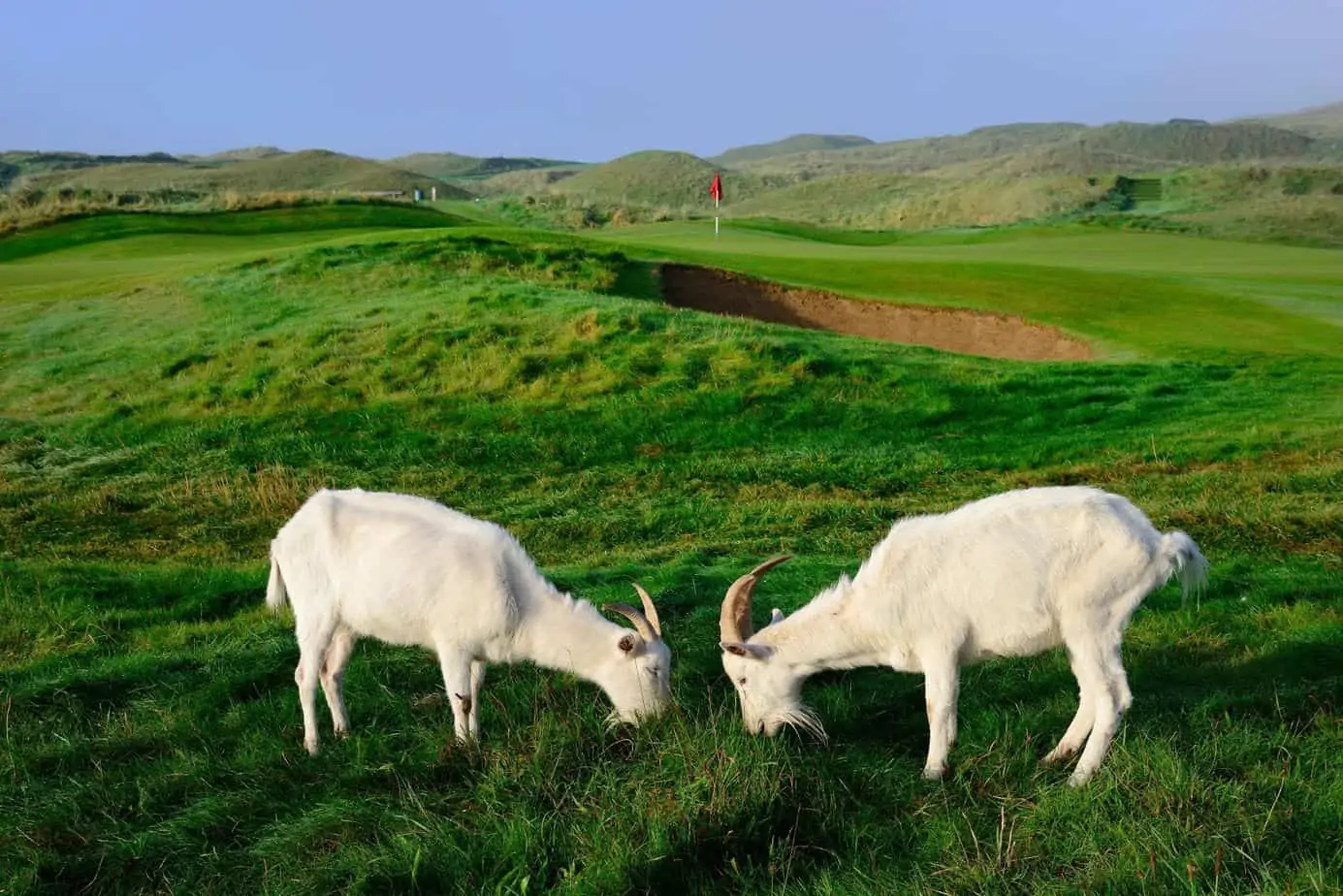Wild goats as a forerunner of the weather app
Sheep on the golf course are very popular at many golf courses. On the other hand, people are usually happy to do without the goats, which are often notorious for being stubborn. On the world-famous Lahinch golf course on the Irish coast , these are part of the daily picture: the wild goats grazing quietly along the fairways. “Their existence is a constant reminder of the connection between animals and humans, between wild and cultivated habitats and the importance of a balance between the two,” the golf club explains.
The wild goats are the largest mammals found here in the dune landscape. Its history dates back to the Goats of Lahinch, held in the early 1900s by local caddy Tommy Walsh, who lived in the small Irish hamlet on the old third tee of the course.
Aside from constantly munching on the dune grass, helping keep them lean, Walsh used the animals primarily for weather forecasting. When the goats stayed near the clubhouse, the weather forecast was usually not good. But once the goats disappeared out into the dunes, the golfers were sure it was going to be a good day of golf.
The wild goat phenomenon has been part of the Lahinch club ever since, which even included the animal in its logo in 1956. And: You could even watch the goats from Lahinch on TV. In 1971 the first film about the animals was broadcast on RTE, in 1945 reporter Colm Flynn stopped by to report on the animals’ weather forecasting abilities .
In the meantime, weather apps have taken over this function in Lahinch. However, the goats are still on site and are an essential part of the sustainability program at one of the best links courses in the world.







